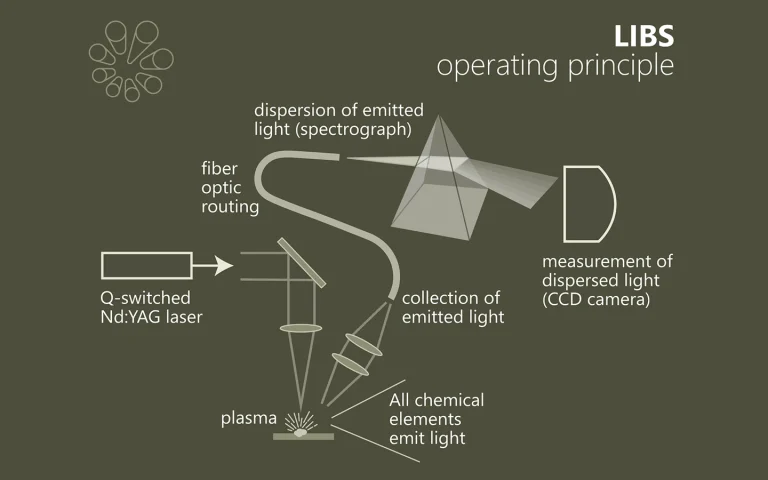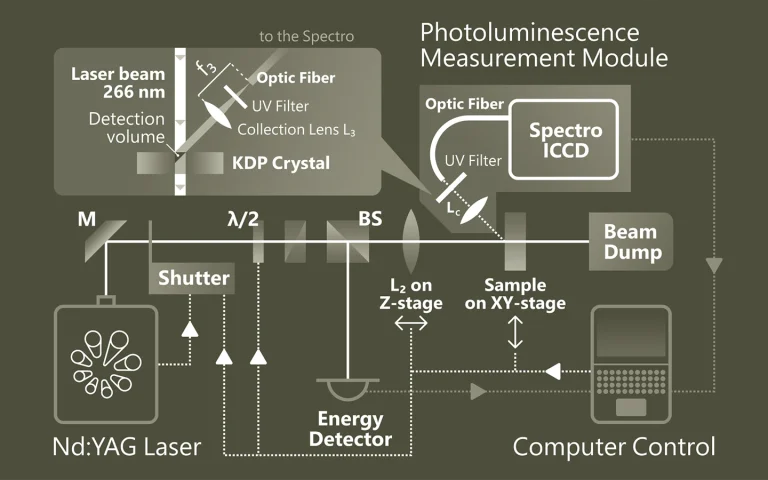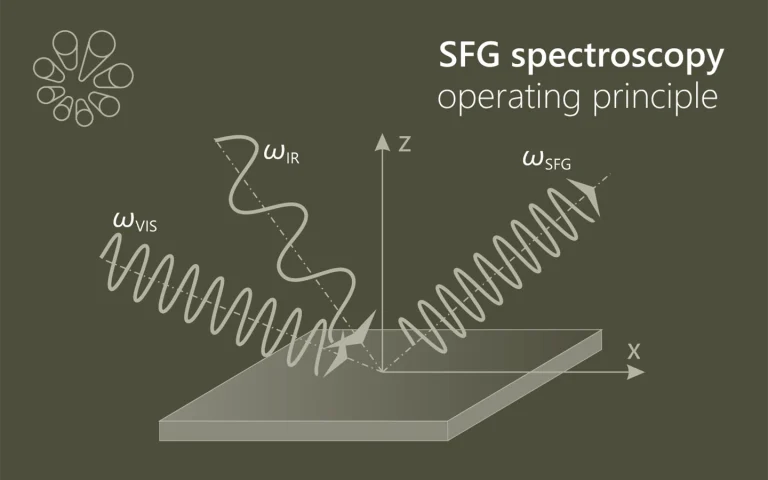PL2250 series
Flash-lamp-pumped picosecond Nd:YAG lasers
The PL2250 series lasers are mode-locked picosecond Nd:YAG lasers that generate high-energy pulses of up to 100 mJ at a pulse repetition rate of 20 Hz. They are characterized by a cost-efficient design that also ensures high reliability and reduces operating and maintenance costs.

Features
- Hermetically sealed DPSS master oscillator
- Diode-pumped regenerative amplifier
- Flashlamp-pumped power amplifier with up to 100 mJ pulse energy at 1064 nm
- Pulse duration of 30 ps (optional 20 ps)
- Excellent pulse duration stability
- Repetition rate up to 20 Hz
- Trigger pulse for streak camera with <10 ps jitter
- Excellent beam position stability
- Optional thermostabilized frequency converter for harmonics
- Software controlled
- Control panel
Applications
- Time-resolved fluorescence spectroscopy (incl. streak camera measurements)
- SFG/SHG spectroscopy
- Nonlinear spectroscopy
- Laser-Induced Breakdown Spectroscopy (LIBS)
- OPG Pumps
- Remote laser sensing
- Satellite Ranging
- Further applications in the field of spectroscopy and non-linear optics.
Applications

Destruction for precise findings
Laser-induced plasma spectroscopy (LIBS) is a fast, non-destructive method for determining the elemental composition of materials. An intense laser pulse generates a plasma on the sample surface whose characteristic emission is analyzed. LIBS is suitable for almost all types of material…

Emission that provides insights
Photoluminescence spectroscopy (PL) is a non-contact method for investigating the electronic and structural properties of materials. The material is excited by light and the emitted radiation is analyzed. This spectral information provides information about band gaps, defects, doping or quantum structure. PL is particularly valuable for semiconductors, nanostructures and optoelectronic materials…

The sum makes the difference
SFG spectroscopy (Sum-Frequency Generation) is a non-linear optical method for investigating molecules on surfaces and interfaces (e.g. solid-liquid, solid-gas). Two laser beams – one visible and one infrared – are superimposed to generate a sum frequency signal that can only be …
Applications
Scientific publications
Aggregation states of poly (4-methylpentene-1) at a solid interface
K. Yamamoto, D. Kawaguchi, K. Sasahara, M. Inutsuka, S. Yamamoto, K. Uchida et al, Polymer Journal 51 (2), 247-255 (2019). DOI: 10.1038/s41428-018-0134-7.
A thin film of poly(4-methylpentene-1) (P4MP1) was prepared on a quartz substrate, which was a model system of an interface in filler-reinforced semicrystalline polymer composites. Grazing-incidence wide-angle X-ray diffraction measurements revealed that P4MP1 in the thin film after isothermal crystallization formed a Form I crystal polymorph composed of a tetragonal unit cell with a72 helix, in which the chain axis was oriented along the direction parallel to the quartz interface. Combining sum-frequency generation vibrational spectroscopy with molecular dynamics simulation enabled us to gain access to the local conformation of P4MP1 chains at the quartz interface and the changes that occurred with isothermal crystallization. Finally, the way in which the initial chain orientation at the substrate interface impacted the crystalline structure in the thin film was discussed.
Soft x-ray emission from laser-produced strontium ions
T. Miyazaki, G. O’Sullivan, and P. Dunne, Journal of Physics B: Atomic, Molecular and Optical Physics 53 (2), 025001 (2019). DOI: 10.1088/1361-6455/ab53be.
Soft x-ray spectra, in the range from 2 nm to 9 nm, were recorded from strontium plasmas formed by pulses from 20 ps, 170 ps and 5.5 ns Nd:YAG lasers operating at the fundamental wavelength of 1064 nm. Features due to 3d-4p and 3d-4f transitions were identified by comparison with spectra from adjacent ions and atomic structure calculations with both the Cowan code and the Flexible Atomic Code. As in the spectra of ions of other elements in the fifth row of the periodic table, resonant lines 3 dn-3 dn-1 4p1, 3 dn-3 dn-14f1 and satellite lines 3 dn-14s1-3dn-24s14p1, 3 dn-14s1-3dn-2 4s14f1 of Δn = 1 were observed over the 3.0-8.5 nm region, emitted by 10+ to 19+ ions. These Δn = 1 transitions provide a range of narrow band emission features which may match to specific multi layer combinations for reflective optics in the extreme ultraviolet region of the spectrum.
Intraoperative diagnostics and elimination of residual microtumors with plasmonic nanobubbles
E. Y. Lukianova-Hleb, Y. Kim, I. Belatsarkouski, A. M. Gillenwater, B. E. O’Neill, and D. O. Lapotko, Nature Nanotechnology 11 (6), 525-532 (2016). DOI: 10.1038/NNANO.2015.343.
Failure of cancer surgery to intraoperatively detect and eliminate microscopic residual disease (MRD) causes lethal recurrence and metastases, and the removal of important normal tissues causes excessive morbidity. Here, we show that a plasmonic nanobubble (PNB), a non-stationary laser pulse-activated nanoevent, intraoperatively detects and eliminates MRD in the surgical bed. PNBs were generated in vivo in head and neck cancer cells by systemically targeting tumors with gold colloids and locally applying near-infrared, low-energy short laser pulses, and were simultaneously detected with an acoustic probe. In mouse models, between 3 and 30 residual cancer cells and MRD (undetectable with current methods) were non-invasively detected up to 4 mm deep in the surgical bed within 1 ms. In resectable MRD, PNB-guided surgery prevented local recurrence and delivered 100% tumor-free survival. In unresectable MRD, PNB nanosurgery improved survival twofold compared with standard surgery. Our results show that PNB-guided surgery and nanosurgery can rapidly and precisely detect and remove MRD in simple intraoperative procedures.
